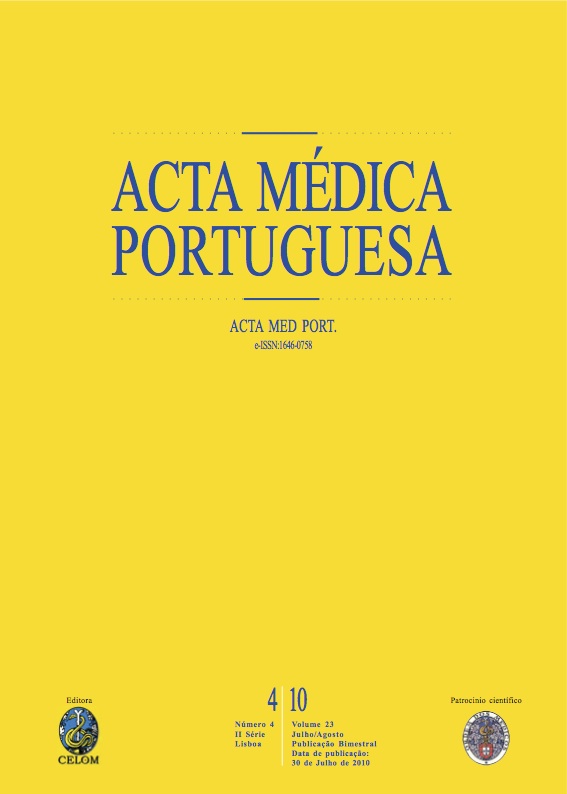Successful caspofungin treatment of invasive refractory candidiasis in the extremely low birthweight neonate.
DOI:
https://doi.org/10.20344/amp.680Abstract
Multiresistant Candida septicaemia is an increasing problem in Neonatal Intensive Care Units worldwide. Caspofungin is a new antifungal drug licensed in Portugal for use in children since September 2008, with limited experience in newborns.Preterm female, 26 weeks gestational age, born by vaginal delivery, with 780g birthweight and Apgar score 8/9. The newborn developed a mucocutaneous candidiasis at day 8 of life which was treated with oral nystatin and topic clotrimazol. Clinical and laboratory deterioration occurred at day 15 of life with Candida albicans sepsis being diagnosed. Therapy with amphotericin B liposome was started but the clinical condition and candidemia persisted. Treatment with caspofungin was initiated at day 28 of life and continued for 28 days. There was an improvement of the clinical condition and the blood cultures became negative. The child was discharged at the 80th of life with no evident clinical problems. The long term follow-up revealed bilateral deafness.This case reveals that caspofungin may be a useful choice for invasive refractory candidiasis in the neonate, especially in the extremely low birthweight neonate and in life-threatening situations. Long term follow-up is of great importance in order to document adverse effects not apparent at the neonatal period.Downloads
Downloads
How to Cite
Issue
Section
License
All the articles published in the AMP are open access and comply with the requirements of funding agencies or academic institutions. The AMP is governed by the terms of the Creative Commons ‘Attribution – Non-Commercial Use - (CC-BY-NC)’ license, regarding the use by third parties.
It is the author’s responsibility to obtain approval for the reproduction of figures, tables, etc. from other publications.
Upon acceptance of an article for publication, the authors will be asked to complete the ICMJE “Copyright Liability and Copyright Sharing Statement “(http://www.actamedicaportuguesa.com/info/AMP-NormasPublicacao.pdf) and the “Declaration of Potential Conflicts of Interest” (http:// www.icmje.org/conflicts-of-interest). An e-mail will be sent to the corresponding author to acknowledge receipt of the manuscript.
After publication, the authors are authorised to make their articles available in repositories of their institutions of origin, as long as they always mention where they were published and according to the Creative Commons license.









